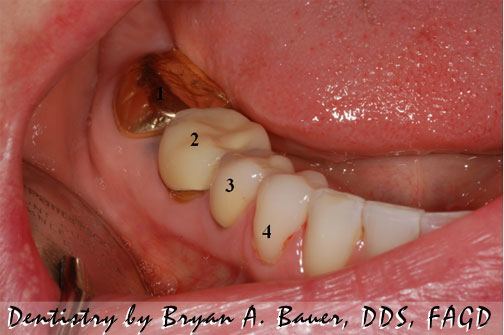Dental crown survival rates
Over the last 10 years there has been a huge increase in the both the number of different types of crowns being used and (as with most new technology) a wide range in the quality of those new crowns being offered. In other words, “a crown is not a crown is not a crown.” Most of the results for survival come back to the strength of the material being used, so I will discuss that briefly.
PFM has a bilayer construction so strength is some somewhat subjective and highly correlated to the dentist giving the technician the proper amount of room to work. 1300MPa is the number seen occasionally. Zirconia ceramic crowns have a strength of over 1200MPa and need very little room so less technique sensitive in that regard. Lithium disilicate ceramic crowns have a strength of 360-400MPa and also need the correct amount of room.
How long does a dental crown last? Research
Silicate glass ceramic only – 97% 5 year 94% 10 year 86% 15 year and 79% 20 year Beier 2012
Meta-analysis of the included studies indicated an estimated 5-year survival of conventional metal ceramic single crown of 95.6% Pjetursson
94% at 8 years survival and 89% at 11 years for ‘metal ceramic defect’ German private practice
18 year survival were 74.9% for the vital group and 79.4% for the RCT group De Backer
Reitemeier private practice vital teeth only
- 94% at 8 years
- 89% without any problem at 11 years
Burke 2009 JofDentistry Burke BDJ 2013
Metal crowns were found to have the longest survival—68% at 10 years, and all-porcelain crowns the shortest—48% at 10 years. Factors which were found to influence outcome of crowns included type of crown, age of patient, patient payment exemption status, patient attendance pattern and placement of a root filling in the same course of treatment as a crown.
Conclusions
Full-coverage all-metal crowns have longer survival times before re-intervention than metal-ceramic crowns and all-ceramic crowns. Root fillings are associated with reduced survival time of the crowns examined in this study
5 year survival rates EBD Dorri 2013 of ceramic crowns. 5 year fracture rate of 8% on molars seems high to me. I’m guessing many studies were using materials before advent of emax and Bruxzir.


